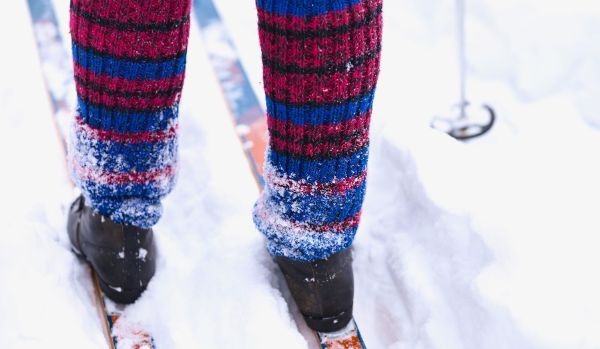Winter sports enthusiasts understand the importance of proper gear to enhance performance, comfort, and safety during cold weather activities. While outerwear and footwear often take the spotlight, choosing the right winter socks is equally crucial.
In this blog post, we will discuss the key factors to consider when selecting winter socks for different winter sports. By understanding the importance of insulation, moisture management, and appropriate sock materials, you can make informed decisions to keep your feet warm, dry, and comfortable while enjoying your favorite winter activities.
Insulation and Warmth
One of the primary functions of winter socks is to provide insulation and keep your feet warm in cold temperatures. Look for socks with good thermal properties that offer effective insulation. Materials such as wool, merino wool, or synthetic blends like polyester and acrylic are excellent choices for winter sports socks. These materials trap heat, provide insulation even when damp, and help regulate foot temperature.
Moisture Management
Winter sports can involve intense physical activity, leading to sweating and moisture buildup inside your footwear. Moisture-wicking properties are essential in winter socks to keep your feet dry and prevent discomfort or potential health issues like blisters or frostbite. Look for socks with moisture-wicking technology that draws moisture away from the skin and promotes quick evaporation, keeping your feet dry throughout your winter sports activities.
Cushioning and Support
Winter sports often involve repetitive movements and impact on the feet. Choosing socks with adequate cushioning and support can help absorb shock, reduce fatigue, and provide additional comfort. Look for socks with targeted cushioning in key areas such as the heel, toe, and arch. Additionally, socks with built-in compression features can enhance blood circulation, reduce muscle fatigue, and improve overall foot stability during winter sports.
Length and Fit
The length and fit of your winter socks can impact both comfort and performance. Consider the type of winter sport you’ll be engaging in and choose the appropriate sock length accordingly. For activities like skiing or snowboarding, longer socks that reach above the calf provide additional warmth and protection. Ensure that the socks fit snugly but not too tight, as a proper fit prevents bunching, friction, and discomfort.
Layering
Layering socks can provide added warmth and insulation, particularly in extremely cold conditions or for individuals prone to cold feet. This technique involves wearing a thin moisture-wicking liner sock as the base layer and a thicker insulating sock on top. Layering allows for better moisture management, improved insulation, and the ability to adjust sock thickness based on weather conditions and personal comfort.
Specialized Sock Features
Different winter sports may have specific sock requirements based on the nature of the activity. Consider specialized features designed for your sport of choice. For example:
- Skiing and Snowboarding: Look for socks with shin padding to protect against boot pressure and cushioning in impact zones like the shins and ankles.
- Ice Skating: Opt for socks with additional padding in the toe and heel areas for better shock absorption on the ice.
- Snowshoeing or Hiking: Choose socks with reinforced soles and ankle support to handle rugged terrain and provide extra stability.
Quality and Durability
Investing in high-quality winter socks is essential to ensure longevity and performance. Look for socks from reputable brands known for their durability, craftsmanship, and use of quality materials. While they may come at a slightly higher price, well-constructed socks will last longer, maintain their insulation and moisture-wicking properties, and provide continued comfort throughout the winter season.
Conclusion
When participating in winter sports, selecting the right winter socks is vital for comfort, warmth, and performance. Consider factors such as insulation, moisture management, cushioning, fit, and specialized features when choosing socks for different winter sports. Opt for materials like wool or synthetic blends with excellent thermal properties and moisture-wicking capabilities. Cushioning and support are important for impact absorption and foot stability. Choose the appropriate sock length and consider layering for added warmth. Additionally, look for specialized features specific to your winter sport of choice.
Remember, each winter sport has unique requirements, so it’s essential to select socks that cater to those needs. Investing in high-quality socks from reputable brands ensures durability and long-lasting performance. Properly chosen winter socks will keep your feet warm, dry, and comfortable, allowing you to fully enjoy your winter activities while staying protected from the elements.
Lastly, don’t forget to pair your high-quality winter socks with appropriate footwear that provides insulation, waterproofing, and proper traction. Together, the right socks and footwear combination will enhance your overall winter sports experience and keep you performing at your best.
Stay warm, stay comfortable, and have a fantastic time participating in your favorite winter sports!

For over 12 years, I have been testing and reviewing heating technologies that overcome cold weather conditions. In recent years, I have specialized in the heated apparel. I’ve made it my mission to educate people about heated clothing.
